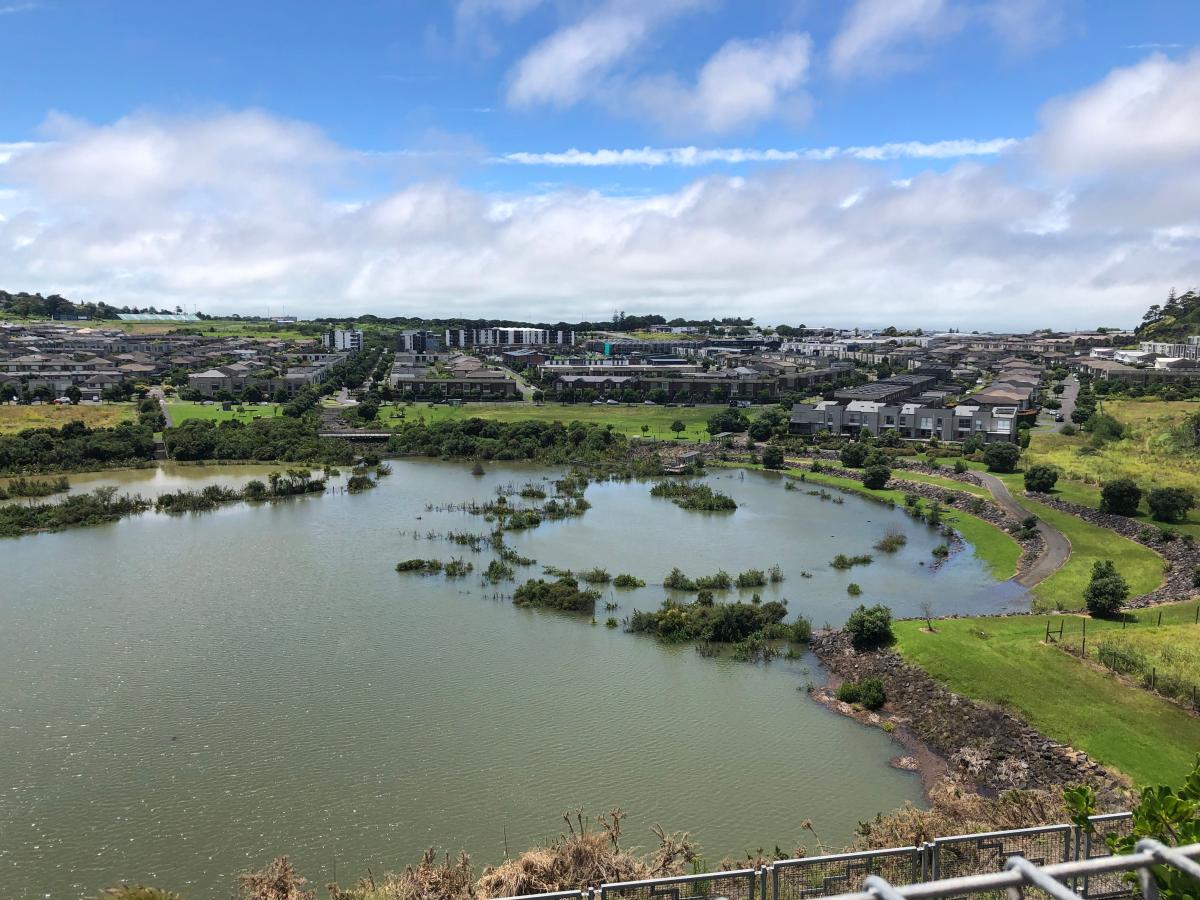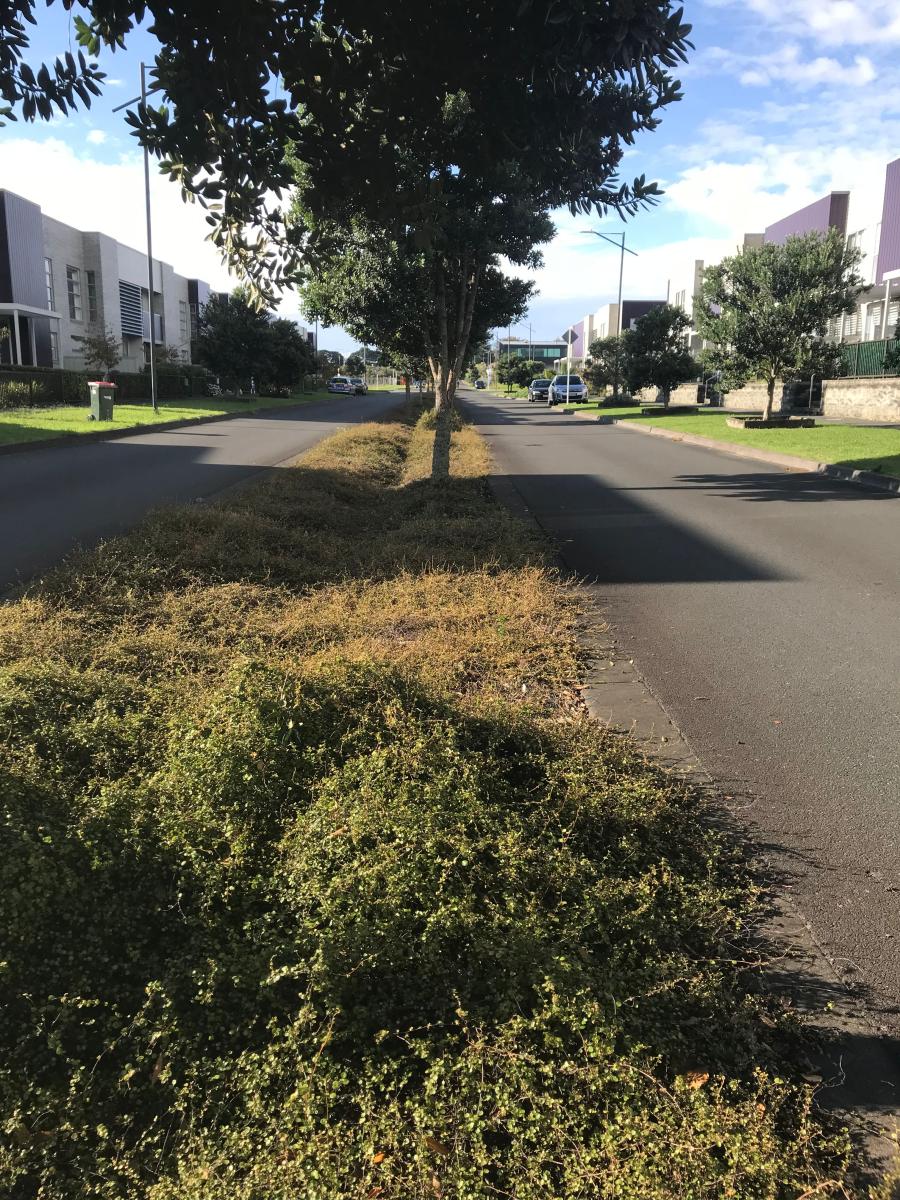Published online: February 2023
Synthesis by: Prof. Margaret Stanley, School of Biological Sciences, Waipapa Taumata Rau/University of Auckland (mc.stanley @ auckland.ac.nz, Twitter: @mc_stanley1)
The severe floods in Tāmaki Makaurau at the end of January 2023 were harrowing for people across the city, causing loss of life, homes, and businesses. Extreme weather events such as these are happening more frequently as the climate continues to warm. While mitigation through reducing emissions is beyond urgent, we also need adaptation strategies to make our cities more resilient.
Similar to other cities that have experienced these types of extreme events (e.g. Hurricane Harvey in Houston, Texas), the severity of the impacts resulting from the extreme rainfall in Tāmaki Makaurau has been exacerbated by ongoing vegetation removal and replacement with impervious surfaces. Rainfall has nowhere to go when falling on impervious surfaces such as concrete – it runs straight off into the stormwater systems that do not have the capacity for such extreme events. However, vegetation can absorb a lot of water; large trees can suck up many cubic metres of stormwater over a year and reduce the amount of water our stormwater infrastructure has to cope with. Depending on the tree species and the intensity of the rainfall, mature trees can intercept up to 60% of rainfall before it reaches the ground. The bigger the tree, the more water it can intercept; these large trees are incredibly valuable assets that can reduce flooding, mitigate air pollution, cool cities in summers and have a raft of other benefits for human health and biodiversity.

Figure 1: The recent flooding at Stonefields in Tāmaki Makaurau – a residential development designed with flood mitigation in mind
Many cities worldwide recognise the value of trees as assets and city authorities are mitigating the severity of flooding using urban greening to support their stormwater infrastructure. Portland, USA rewards landowners by giving them a rebate (‘treebate’) on their rates bill for every large tree on their property, recognising the contribution of those trees to stormwater and air pollution mitigation in the city. In Chicago, street trees have ‘price tags’ as a communication tool to indicate just how much they contribute to the city each year. Research has estimated that the median benefit of trees to megacities (>10M people) is around US$500M per year for each city. And recent global analysis of services provided by vegetation in cities show about 33% of the rain in extreme events is retained by vegetation. Cities with more vegetation can divert a higher proportion of the rainfall.
Nature-based solutions are actions that manage or restore ecosystems to achieve societal challenges such as climate change, while simultaneously providing biodiversity and human wellbeing benefits. Greenspaces and wetlands are becoming critical nature-based solutions throughout the world particularly in areas that have experienced a decade or more of extreme floods, with the Chinese government in 2014 announcing ‘sponge cities’ as a national initiative to tackle flooding and improve the environment. Wetlands are particularly good at absorbing water and slowing the energy of rivers – but in Aotearoa we have lost 90% of our wetlands and replaced them with impervious surfaces and highly compacted soils, leaving little to intercept high rainfall and fast-flowing water. Where possible, restoration of streams and wetlands (particularly upstream of infrastructure) is critical to creating resilient cities, as is water-sensitive urban design via well-designed green infrastructure, such as swales and raingardens. These devices slow and filter stormwater much like wetlands do, but they can be put in much smaller places. New developments in Tāmaki Makaurau with water-sensitive designs, such as Stonefields and Hobsonville Point, appear to have coped with the intense rainfall far better than older suburbs with traditional city planning. The challenge now lies in retrofitting at-risk suburbs with green infrastructure, making space for vegetation and water to flow.

Figure 2: Simple solutions can be found to reducing impervious surfaces in residential areas
Analysis from European cities has shown that the key to successful implementation of large-scale urban greening is strong leadership, support at the political and executive level and a well-resourced project team. Although we are increasingly implementing green stormwater infrastructure in some parts of Aotearoa, climate change adaptation for cities requires a complete change in mindset. We can no longer rely on pipes and concrete alone, we should be investing in nature-based solutions throughout our cities, on private land throughout existing suburbs as well as public land. At the very least, instead of removing large trees to make way for new developments, these should be built in a way that works with existing vegetation. Supporting individual landowners to see trees and vegetation as assets which provide a multitude of benefits and giving them the support to reduce impervious surfaces and implement simple, but well-designed nature-based solutions is key to achieving resilience at scale across cities. While green infrastructure alone is unlikely to have prevented the severe impacts of the intense rainfall experienced recently by Tāmaki Makaurau, nature-based solution and water-sensitive design can reduce the magnitude of flood impacts and have a multitude of other benefits.
Relevant literature:
Croeser T, Garrard GE, Thomas FM, Tran TD, Mell I, Clement S, Sánchez R, Bekessy S (2021) Diagnosing delivery capabilities on a large international nature-based solutions project. npj Urban Sustainability 1. https://doi.org/10.1038/s42949-021-00036-8
Endreny T, Santaga R, Perna A, De Stefano C, Rallo FR, Ulgiati S (2017) Implementing and managing urban forests: A much needed conservation strategy to increase ecosystem services and urban wellbeing. Ecological Modelling 360: 328-335. https://doi.org/10.1016/j.ecolmodel.2017.07.016
Hou Y, Ding W, Liu C, Li K, Cui H, Liu B, Chen W (2022) Influences of impervious surfaces on ecological risks and controlling strategies in rapidly urbanizing regions. Science of The Total Environment 825, 153823. https://doi.org/10.1016/j.scitotenv.2022.153823
Jian Y, Zevenbergen C, Ma Y (2018) Urban pluvial flooding and stormwater management: A contemporary review of China’s challenges and “sponge cities” strategy. Environmental Science and Policy 80. https://doi.org/10.1016/j.envsci.2017.11.016
Rahman, MA, Pawijit Y, Xu C, Moser-Reischl A, Pretzsch H, Rötzer T, Pauleit, S (2023) A comparative analysis of urban forests for storm-water management. Scientific Reports 13, 1451. https://doi.org/10.1038/s41598-023-28629-6
Richards DR, Belcher RN, Carrasco LR, Edwards PJ, Fatichi S, Hamel P, Masoudi M, McDonnell MJ, Peleg N, Stanley MC (2022) Global variation in contributions to human well-being from ecosystem services provided by urban vegetation. One Earth 5. https://doi.org/10.1016/j.oneear.2022.04.006
Shanahan DF, Fuller RA, Bush R, Lin BB, Gaston KJ (2015) The health benefits of urban nature: how much do we need? BioScience 65. https://doi.org/10.1093/biosci/biv032
Yang B, Lee DK, Heo HK, Biging G (2019) The effects of tree characteristics on rainfall interception in urban areas. Landscape and Ecological Engineering 15. https://doi.org/10.1007/s11355-019-00383-w
